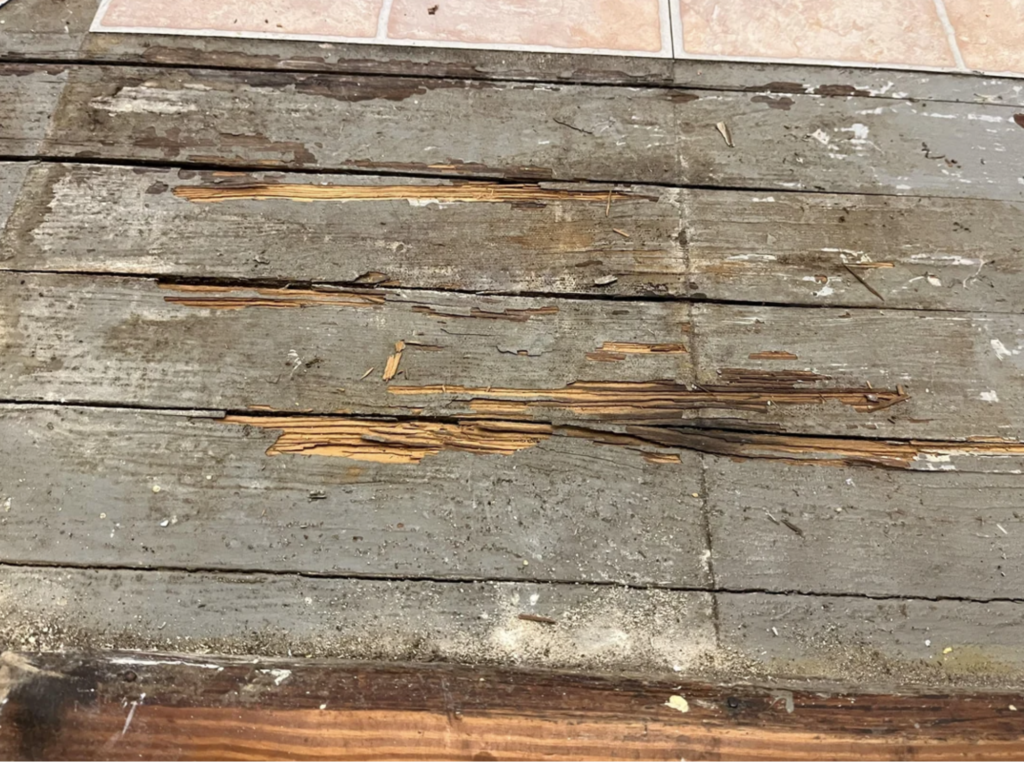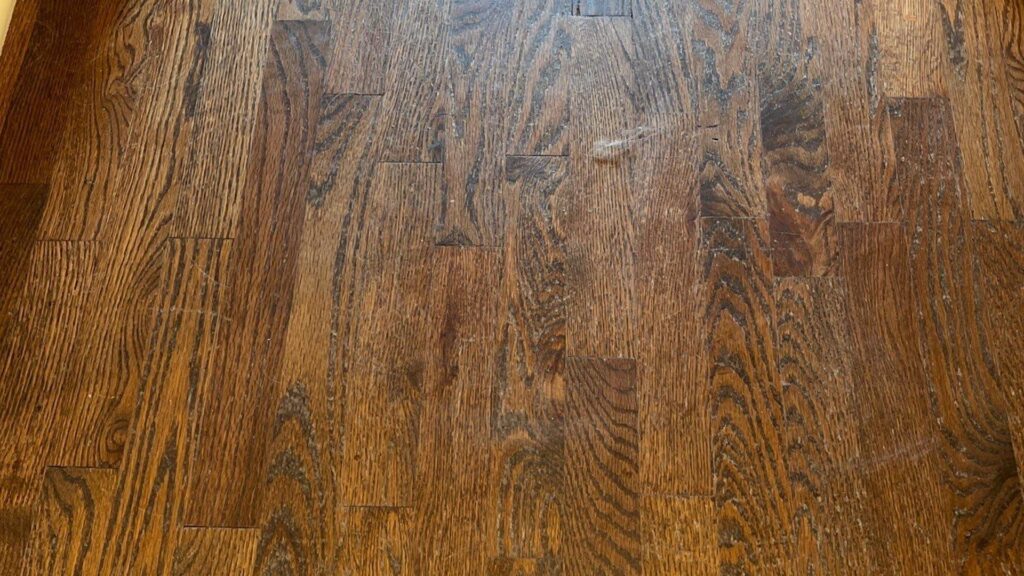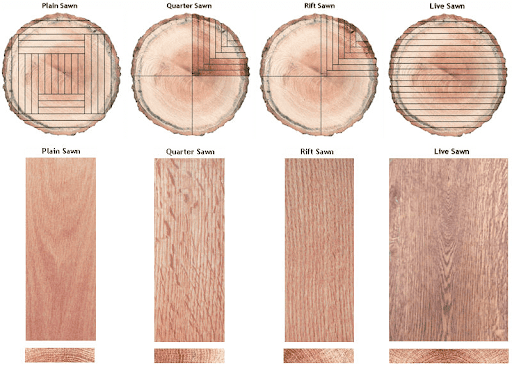
Your hardwood floors have seen years of life. Maybe they’ve hosted family dinners, messy toddlers, or a few too many holiday parties. But now they’re looking dull, scratched, or just… tired.
The big question is:
Do your floors need a full refinishing, or would a maintenance coat do the trick?
This is one of the most common (and most important) decisions homeowners face when it comes to hardwood floor care. And the answer could save you thousands of dollars—or cost you a floor replacement if you guess wrong.
Let’s break it down.
What Is a Maintenance Coat? (Also Known as Screen and Recoat)
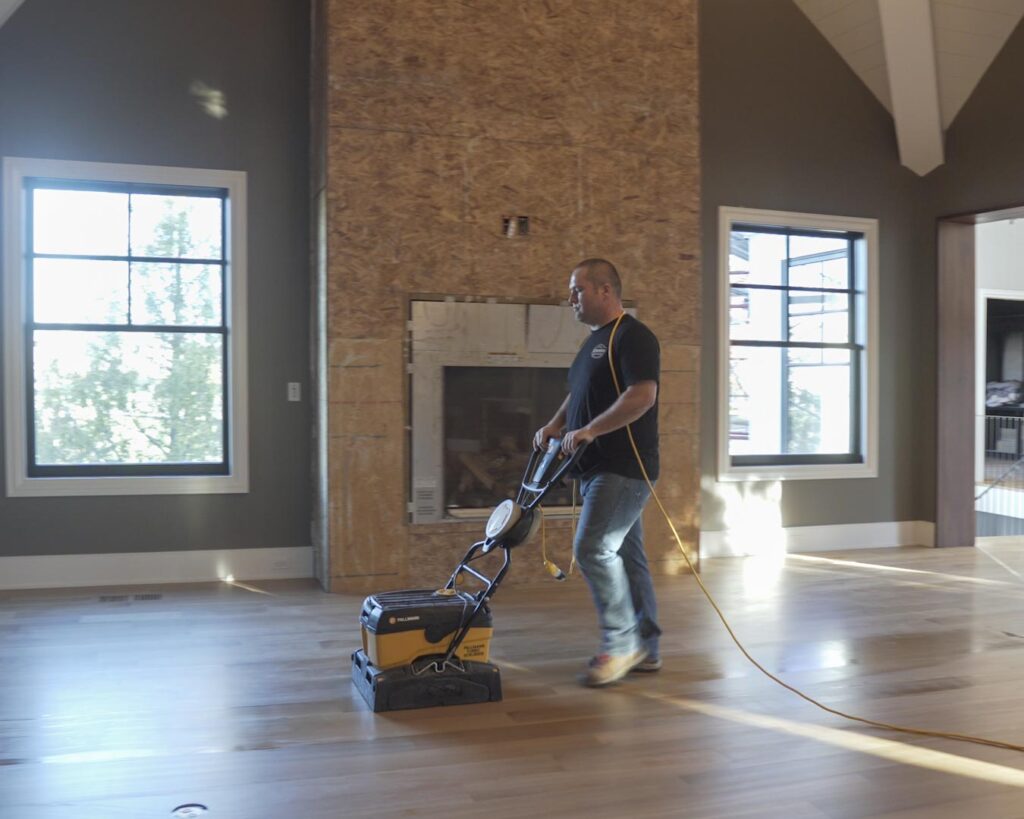
A maintenance coat, sometimes called a “screen and recoat,” is a simple, powerful way to extend the life of your hardwood floors without sanding.
Here’s what it involves:
- Lightly buffing (or “screening”) the existing finish using a mesh screen
- Applying a fresh topcoat of polyurethane over the abraded surface
- Letting it cure—usually in less than a day
That’s it. No sanding down to bare wood, no color change, and minimal disruption.
✅ When to Use a Maintenance Coat:
- Your floor is dull or lightly scratched
- The protective finish is still intact (no raw wood showing)
- You want to extend your floor’s life without a big project
❌ When It Doesn’t Work:
- If the floor has wax buildup or heavy contaminants
- If deep scratches, water stains, or worn-through finish are present
- If you want to change the color of your wood
According to the National Wood Flooring Association (NWFA), properly recoated floors can avoid full sanding for decades when maintained every 3–5 years.
What Is Full Refinishing?
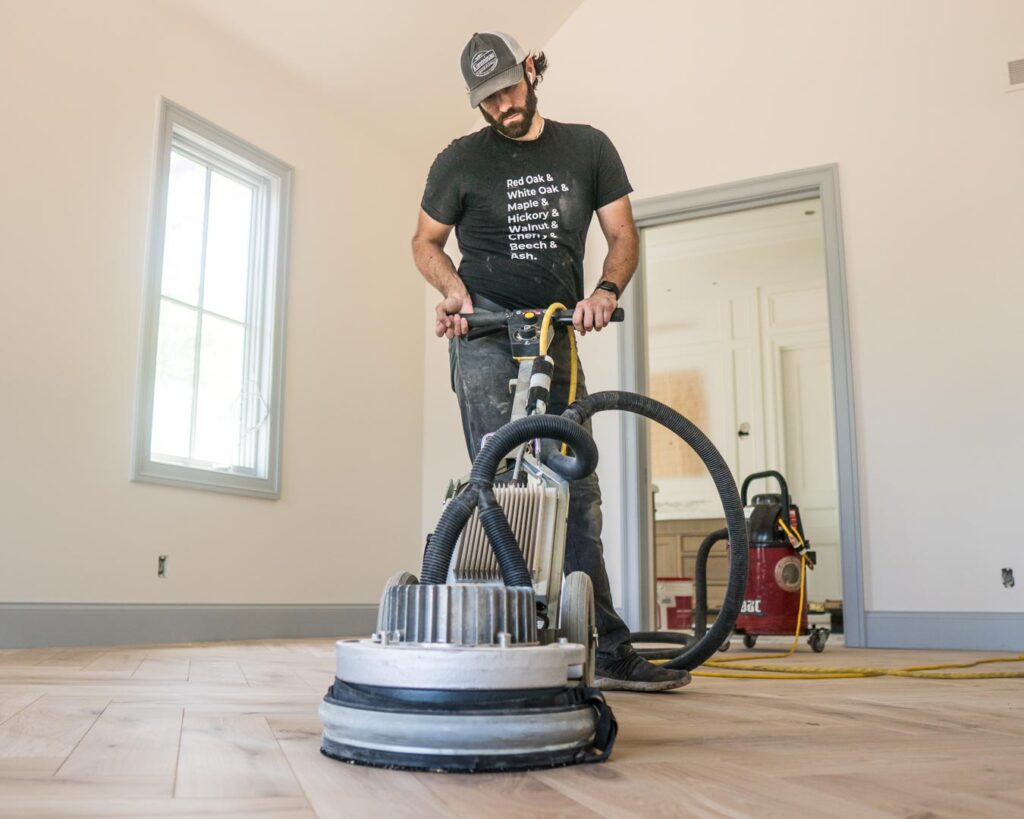
A full refinishing is a complete overhaul for your hardwood floors.
Here’s what it includes:
- Sanding down to the bare wood
- Removing all scratches, stains, and finish
- Option to change the stain color or sheen
- Applying multiple coats of fresh finish
- Cure time: typically 2–5 days
It’s a bigger project, but it also resets the clock on your floor’s lifespan.
✅ When to Refinish:
- Finish is completely worn through
- Deep scratches, gouges, or gray/dark water stains are visible
- You want to change the floor color
- Cupping, warping, or UV damage is present
- The floor has never been refinished and shows age
Refinishing restores beauty and durability—but it’s also more expensive and time-consuming.
At-a-Glance: Screen and Recoat vs Refinishing
| Feature | Maintenance Coat (Recoat) | Full Refinishing |
| Sanding to bare wood? | No | Yes |
| Removes deep scratches? | No | Yes |
| Changes color? | No | Yes |
| Time required | 1 day | 3–5 days |
| Dust/disruption | Minimal | Moderate to heavy |
| Cost | Lower | Higher |
| Frequency | Every 3–5 years | Every 7–10 years (avg) |
| Lifespan impact | Extends finish’s life | Resets floor’s life |
How to Tell What Your Floor Really Needs
1. Inspect the Damage
- Light surface scratches, haze, or dullness? → Maintenance coat.
- Exposed raw wood, deep gouges, or discoloration? → Refinishing.
2. Try the Water Drop Test
- Drop a few beads of water on the floor.
- If it beads up: Finish is still intact. You likely just need a recoat.
- If it soaks in immediately: Finish is gone. Refinishing is likely necessary.
3. Know the Floor’s History
- When was it last refinished or recoated?
- Most floors can be refinished 4–7 times over their life (if solid hardwood).
- If your floor has already been refinished multiple times, there may not be enough material left to sand.
4. Check the Finish Type
Recoating only works on certain finishes:
- ✅ Works: Oil or water-based polyurethane
- ❌ Doesn’t work: Waxed floors, aluminum oxide without bonding agents, or factory finishes not prepped properly
NWFA recommends doing an adhesion test before recoating any unknown finish to ensure the new coat will bond correctly.
The Power of Maintenance Coats (Why More People Should Be Using Them)
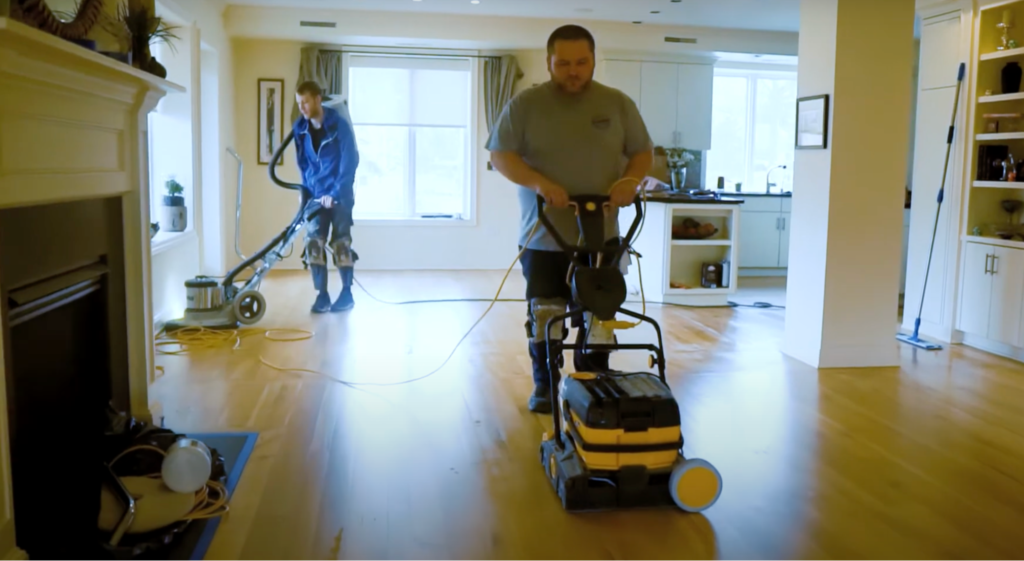
Think of a maintenance coat like an oil change for your car. It’s simple, inexpensive, and keeps your hardwood floor protected for years to come.
- Done every 3–5 years, a maintenance coat:
- Prevents dirt from cutting through the finish
- Stops moisture from reaching bare wood
- Reduces the need for full sanding
- According to NWFA, regular recoating can extend a floor’s life by decades.
Many homeowners skip this step—and regret it when their floors become too damaged to save.
When Refinishing Is Your Only Option

If maintenance coats are the oil change of wood floor care, refinishing is a full engine rebuild. More complicated, more expensive, but resets things effectively back to new.
A full sand-and-refinish is needed if:
- Your floor has deep scratches, gouges, or pet damage
- The finish is completely gone, and the wood has turned gray
- You see black stains from water damage
- Boards are starting to cup or warp
- You want to dramatically change the color of your floor
In these cases, a maintenance coat won’t solve the problem—it will only delay the inevitable.
Real-Life Scenarios
🏠 Scenario 1: Family Home with Surface Scuffs
- Kids and a dog, but no deep gouges
- Finish still intact, just dull
- ✅ Solution: Maintenance coat
🏢 Scenario 2: Rental Property with Neglected Floors
- Dull, sticky surface with no shine
- Wax and residue buildup
- ❌ Solution: Likely needs refinishing and wax removal
🕰️ Scenario 3: Historic Home with Worn Oak Floors
- Scratches, discoloration, and inconsistent tone
- Owner wants to change stain color
- ❌ Solution: Full refinishing
🆕 Scenario 4: Recently Installed Floors, Losing Sheen
- Less than 5 years old
- Minimal wear, just fading shine
- ✅ Solution: Screen and recoat
The Bottom Line: Don’t Wait Too Long
Here’s the golden rule:
If you recoat before damage sets in, you can avoid refinishing.
If you wait too long, refinishing becomes the only option—and you might even miss that window.
A well-timed maintenance coat:
- Costs less (as low as $1.50/sqft)
- Creates less mess
- Extends the life of your floor
A full refinishing:
- Is more expensive and time-consuming
- But saves floors that are badly damaged
Still Not Sure? Let the Pros Take a Look
If you’re on the fence, don’t guess. The safest move is to get a professional evaluation from someone who understands how to test the finish, assess wear, and give honest advice.
At Kimminau Wood Floors, we specialize in evaluating and restoring wood floors throughout the Kansas City area. We’ll let you know whether a simple recoat is enough—or if your floors need a full reset.
Schedule Your Free Hardwood Floor Assessment Today
Whether you want to breathe life back into dull floors or repair years of damage, Kimminau Wood Floors is here to help.
✅ Honest evaluations
✅ Beautiful results that last for decades
👉 Contact us now to book your free floor inspection.



